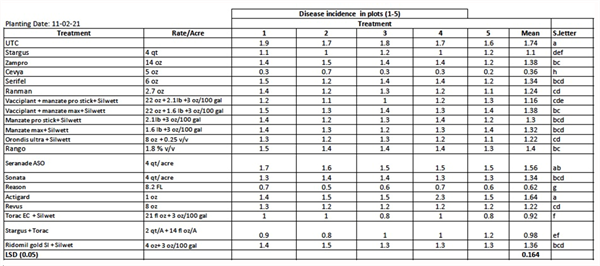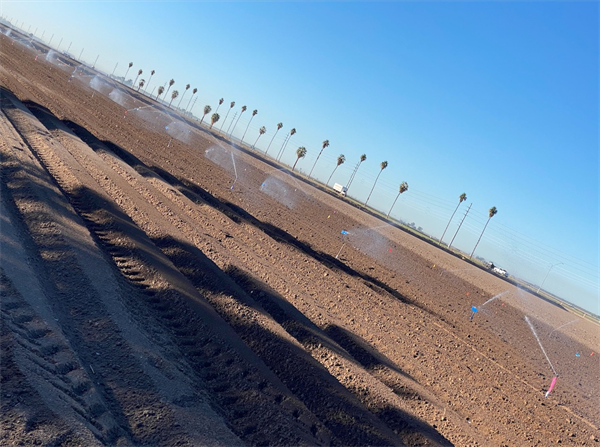Nov 15, 2023
Crop Water Management Basics
In desert agriculture we have an abundance of motivation to manage water efficiently. Water is the first limiting factor in crop production systems in the desert Southwest. Agriculture is responsible for the use of approximately 70% of all the freshwater use in Arizona and some estimates indicate about 80% of the Colorado River water diversions.
Crop production systems in the desert Southwest are experiencing increasing pressure to document and improve irrigation efficiency. Following more than two decades of drought in the western U.S., many watersheds are experiencing critical water shortages. A great deal of scrutiny is being applied to crop production systems in this region.
There are several ways to define irrigation efficiency. The primary definitions for irrigation efficiency include agronomic, economic, and environmental orientations.
In my view, the
agronomic efficiency of irrigation is fundamental and at the core of why we irrigate, which is for the benefit of the crop being grown. The crop plants are the centerpiece of the production process and the soil-plant system itself represents the primary objective of irrigation management.
Agronomic Irrigation Efficiency
Agronomic (crop and soil) considerations are centered on our ability to provide irrigation water for the sustainable production of a crop in the field. The three primary demands for crop water management include: 1) providing water for seed germination and stand establishment, 2) providing irrigation water to match crop-consumptive water use and avoid crop water stress, and 3) provide sufficient irrigation water to leach soluble salts from the root zone so that the soils can support crop production in a sustainable manner (Figure 1).
Agronomic efficiency at the field level focuses on the
crop water demand (CWD) through crop consumptive use (
crop evapotranspiration, ETc, which is the combination of evaporation and transpiration from the crop) and
leaching requirements (LR) which are dependent upon the crop and salinity of the irrigation water.
Agronomic efficiency can be estimated by considering the difference between ETc + LR = CWD and the volume of irrigation water applied (
IWA).

The leaching requirement (LR) can be estimated by use of the following calculation:

Where:
EC
w = salinity of the irrigation water, electrical conductivity (dS/m)
EC
e = critical plant salinity tolerance, electrical conductivity (dS/m)
This is a good method of LR calculation that has been utilized extensively and successfully in Arizona and the desert Southwest for many years. This method considers the quality of the irrigation water being used and the salinity tolerance of the crop.
We can easily determine the salinity of our irrigation waters (EC
w) and we can find the critical plant salinity tolerance level from readily available tabulations of salinity tolerance for many crops (Ayers and Westcot, 1989). Additional direct references are from Dr. E.V. Maas’ lab at the University of California (Maas, 1984: Maas, 1986; Maas and Grattan, 1999; Maas and Grieve, 1994; and Maas and Hoffman, 1997).
To deal with crop water management at the field level agronomically, the crop and soil factors, there are some good tools that we can easily access for assistance.
Dr. Jeremy Weiss, program manager for the University of Arizona AZMET system, developed some valuable tools last year that provide actual crop evapotranspiration (ETc) estimates from several AZMET sites in the lower Colorado River Valley and for several key vegetable crops, including lettuce (iceberg and romaine), broccoli, cauliflower, cabbage, and spinach.
He has made some nice modifications to this tool and I think you will find the enhancements very useful and beneficial.
This tool provides accumulations of ETc values for this current season utilizing the crop planting date selected by the user and any range of time up to the present. The Kc values presented in FAO-56 are used for appropriate stages with each crop. The reference evapotranspiration (ETo) measurements are taken directly from each AZMET site listed. Thus, by this method ETc estimates are made by use of equation 3. These provide good crop-water use estimates for our crops in this region.

To access this crop-water estimate tool please refer to the following link:
https://viz.datascience.arizona.edu/azmet/azmet-crop-water-use-estimates/
If we enter information for a lettuce crop planted on 1 September 2023 through 10 November for the Yuma South site, we get the following information from this tool:
“Estimated total water use at the AZMet Yuma South station for lettuce since the planting date of September 1, 2023 and through the end date of November 10, 2023 is 11.47 inches. Total precipitation over this period is 0.40 inches.”
Similar estimates are provided by this model for several AZMET weather stations in the Yuma production area: Roll, Yuma North Gila, Yuma South, and the Yuma Valley. The Yuma Valley station is at the University of Arizona Yuma Agricultural Center and the Yuma South site is near Somerton, Arizona. A map of AZMET sites can be found in the following link:
https://ag.arizona.edu/azmet/mapsites.htm
When we include the leaching requirement for the crop, an overall estimate of field level irrigation efficiency can be made. We can estimate the leaching requirement as follows assuming an electrical conductivity for Colorado River water of 1.1 dS/m and the lettuce crop salinity tolerance of 1.3 dS/m.
Leaching Requirement (LR) = ECw/((5 X ECe)-ECw)
LR = 1.1 dS/m / (5 X 1.3) – 1.1 = 1.1/5.4 = 0.20 = 20% leaching requirement
LR = 11.5 X 0.2 = 2.3 ~ 2.3 inches
If 12 inches of irrigation water was required in this field for total crop consumptive use, then the total crop water demand in this case is consumptive use plus the leaching requirement:
Total crop water demand (in this example) = 12.0 + 2.3 = 13.8 or ~ 14 inches total
Considering the total crop-water demand from this AZMET crop-water use tool plus the leaching requirement, we can compare that with the amount of irrigation water that was actually applied to the field. This can provide an estimate of the agronomic efficiency for a given field of lettuce, or any of the for other leafy green vegetable crops that we commonly grow in this area and select from tool’s menu.
It serves us well to measure and understand the relationship between crop demand (consumptive use plus leaching requirements) versus the irrigation water that is applied to a given field.
References
Allen, R. G., Pereira, L. S., Raes, D., & Smith, M. (1998).
Crop evapotranspiration-Guidelines for computing crop water requirements-FAO Irrigation and drainage paper 56. FAO, Rome, 300(9), D05109.
Ayers, R.S. and D.W. Westcot. 1989 (reprinted 1994). Water quality for agriculture. FAO Irrigation and Drainage Paper 29 Rev. 1. ISBN 92-5-102263-1. Food and Agriculture Organization of the United Nations Rome, 1985 © FAO.
https://www.fao.org/3/t0234e/t0234e00.htm
Erie, L.J., O.A French, D.A. Bucks, and K. Harris. 1981. Consumptive Use of Water by Major Crops in the Southwestern United States. United States Department of Agriculture, Conservation Research Report No. 29.
Khokhar, T. 2017. World Bank.
https://blogs.worldbank.org/opendata/chart-globally-70-freshwater-used-agriculture
Maas, E.V. 1984. Crop tolerance to salinity. California Agriculture, October 1984.
https://calag.ucanr.edu/archive/?type=pdf&article=ca.v038n10p20
Maas, E.V. 1986. Salt tolerance of plants. Appl. Agric. Res., 1, 12-36.
Maas, E.V. and S.R. Grattan. 1999. Crop yields as affected by salinity, Agricultural Drainage, Agronomy Monograph No. 38.
Maas, E. V., and Grattan, S. R. (1999). Crop yields as affected by salinity, agricultural
drainage, Agronomy Monograph No. 38, R. W.
Maas, E. V., and Grieve, C. M. 1994. “Salt tolerance of plants at different growth stages,” in Proc., Int. Conf. Current Developments in Salinity and Drought Tolerance of Plants. January 7–11, 1990, Tando Jam, Pakistan, 181–197.
Maas, E. V., and Hoffman, G. J. (1977). “Crop salt tolerance: Current assessment.”











